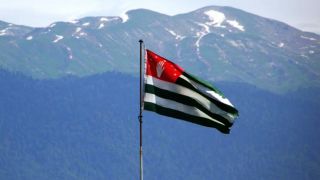Terrorism is one of the biggest challenges in the present-day world. The key actor here is ISIL, a large extremely brutal organization seeking to grow into a caliphate.
That group is very active in Syria and Iraq but not only. Central Asia with its mostly Sunni population, hard social-economic conditions and inefficient political regimes is also a good target for ISIL and its recruiters.
Here ISIL’s partner is Islamic Movement of Uzbekistan (or Islamic Movement of Turkestan), formerly a partner of Al Qaeda.
According to the Federal Security Service of Russia, as of Jan 2016 there were 2,900 Russian citizens and 2,500-4,500 post-Soviet (mostly Central Asian) citizens fighting for ISIL. These statistics do not cover Central Asians from Afghanistan, Pakistan and Al Qaeda camps all over the Middle East.
According to the Soufan Group, in Dec 2015 there were 2,046 Central Asians fighting for ISIL in Syria and Iraq: 500 from Uzbekistan, 500 from Kyrgyzstan, 386 from Tajikistan, 360 from Turkmenistan, 300 from Kazakhstan.
There also are lots of fighters in Afghanistan. According to the UN Security Council, in Mar 2015 there were almost 6,500 active foreign terrorists in that country. 200 of them were from the Islamic Movement of Uzbekistan. Russia’s General Staff reports that there are as many as 50,000 terrorists in Afghanistan.
ISIL recruiters are quite efficient in Central Asia. Last year they managed to recruit even the commander of the Tajik Special Police Force Gulmurod Khalimov. Graduate of higher schools in Tajikistan, Russia and the United States, Khalimov decided to join ISIL in Syria and warned his own brother that he would cut his throat if he dared to take arms against ISIL.
“This does not mean that ISIL enjoys popularity in Central Asia. Simply there are certain social prerequisites for its recruitment activities,” says Director of the Analytical Center of MGIMO Andrey Kazantsev.
The expert advises the Central Asian regimes to be more active in fighting corruption and fueling economy as injustice and poverty are the key factors urging some locals to join ISIL. “The worst option for them is to start fighting Islam as such as this may cause a reverse reaction,” Kazantsev says.
Chief Editor of Russia in Global Affairs journal Fyodor Lukyanov predicts changes in Central Asia. “The local regimes cannot stay in power for ever. They will have to be changed. But I can’t say how this will happen – peacefully or not,” the expert says.
“The Central Asian regimes think that global players will fight for influence in their region and they will just have to choose who to be with. But the fact is that nobody needs Central Asia. This is a trophy nobody knows what to do with. That region is still unstable. It has lot of problems with nation building and nobody is going to solve them for them. At some point, the world may just give up on that region,” Lukyanov says in an interview to EADaily.
But unlike the United States, who is far from Central Asia, Russia has no choice but to try to help the region. One of the possible options for the Russians is to involve the Central Asian nations into the Eurasian Economic Union and Silk Road projects.
“This may save those countries. China does not need influence in Central Asia. All it needs is to lay new roads and pipelines and to be sure that they will be safe. We must act likewise. But if an Arab Spring comes, we will be forced to do the same we did in Syria,” Lukyanov says.
In the meantime, corruption, poor administration, economic decline and poverty continue playing into the hands of radical Islamists and terrorists.
The last constitutional referendum in Tajikistan has permitted President Rakhmon to be reelected for as many times as he likes. So, now all Central Asian nations are ruled by dynastic regimes.
Their guarantees against terrorism are own armies and external support. Kyrgyzstan and Tajikistan rely on Russia. No coincidence that the biggest 7,000-strong Russian military base is deployed in Tajikistan.
But military force alone will not help the Central Asian nations. In order to be stable, they need drastic reforms.
Hayk Khalatyan, specially for EADaily
 An English teacher set fire to a police station in the Vladimir region
An English teacher set fire to a police station in the Vladimir region Queues at the border with Europe: 75,000 residents left Ukraine during the day
Queues at the border with Europe: 75,000 residents left Ukraine during the day "Complete robbery" — Trump is going to take away the Panama Canal
"Complete robbery" — Trump is going to take away the Panama Canal Rylsk was hit by GMLRS missiles from MLRS HIMARS
Rylsk was hit by GMLRS missiles from MLRS HIMARS Georgian wine exports break records
Georgian wine exports break records The runaway Makarevich ** lost everything acquired by overwork
The runaway Makarevich ** lost everything acquired by overwork Nowhere without Putin and Trump: The Week showed the faces of the year — 2024
Nowhere without Putin and Trump: The Week showed the faces of the year — 2024